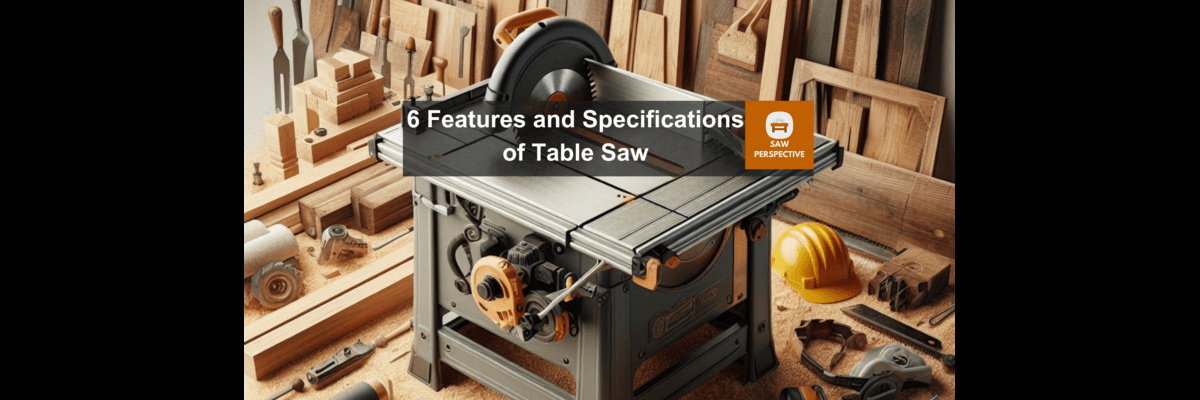Choosing the ideal table saw becomes an exciting try when you explore its key features. This article explores six essential aspects that contribute to a positive woodworking experience. This saw has a robust motor power and versatile blade size and types. It also has ample rip capacity and cutting width.
It has reliable safety features, efficient dust collection, and convenient portability. By gaining a deep understanding of these factors, you empower yourself. This helps you select a saw that aligns with your needs. It also enhances your woodworking aspirations.
1. Motor Power and Performance
Power Consumption : The power consumption of a table saw depends on the size and power of the motor. A small portable table saw with a 1-horsepower motor might use only 1,000 watts of power. A large cabinet saw with a 3-horsepower motor could use as much as 3,000 watts.
Power consumption is also affected by the type of wood being cut and the thickness of the cut. Cutting hardwood or making thick cuts will draw more power. Cutting softwood or making thin cuts will draw less power.
Amperage :The amperage of a table saw is a measure of the electrical current that the saw draws. Amperage is related to power consumption, but it is not the same thing. A table saw with a higher amperage rating will be able to handle a heavier load than a saw with a lower amperage rating.
2. Blade Size and Types
Table Saw Blade Types:
- Rip Blades
- Crosscut Blades
- Combination Blades:
- Dado Blades
- Miter Saw Blades
- Fine-tooth Blades
- Coarse-tooth Blades
Types of Cuts in Woodworking:
- Rip Cut
- Crosscut
- Miter Cut
- Bevel Cut
- Dado Cut
- Rabbet Cut
- Resawing
- Compound Cut
- Plunge Cut
- Cove Cut
Blade Diameter and Tooth Configuration: Blade diameters vary from 8 to 12 inches. Tooth configurations include rip and crosscut. Rip has fewer large teeth for quick cuts. Crosscut has smaller teeth for smoother cuts.
3. Rip Capacity and Cutting Width
Rip capacity is a crucial factor in table saw selection. It represents the maximum distance between the blade and the fence. A higher rip capacity allows for wider cuts. This makes it easier to process large sheets or panels. Achieve precise and efficient cuts.
This applies to tasks like plywood ripping and creating furniture sections. Focus on the cutting width. For smaller DIY projects and intricate woodwork, optimize the cutting width.
Consider both rip capacity and the choice of blade. It impacts the efficiency and precision of woodworking projects.
4. Safety Features
1. Blade guard
2. Anti-kickback pawls
3. Riving knife
4. Blade brake
5. Push stick
6. On/off switch with emergency shut-off
7. Adjustable blade height and angle
8. Splitters
9. Fence system
10. Overload protection
5. Dust collection and cleanup
Maintaining a clean and safe work environment is key to a positive table saw operation. Effective dust collection ensures a pristine workspace. It helps promote longevity and prevent potential respiratory health risks.
Regular cleanup extends the saw’s life. It also safeguards against costly repairs. While eliminating debris and preventing corrosion for optimal performance.
6. Mobility and Portability
Mobility: Mobility refers to the table saw’s ability to be moved around a workspace or transported. This is especially important for woodworkers. They need to move their saw to different job sites or work areas.
Portability: Portability refers to the table saw’s ability to be dismantled and transported. This is important for woodworkers who need to take their saw with them to job sites. Also who have limited storage space. Portable table saws are smaller and more compact than stationary table saws.

